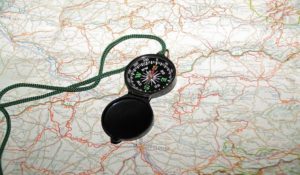GIS is a broad research field and application that require tools such as 2d, and 3d. The analysis and type of tool to use will be based on the research purpose. The broadening of geographic information systems has led to the advancement of information communication and technology, also, in the modification of tools and management of special information. The first use of geographic information systems was placed in the modern management of cartography. This GIS supported two representations, including 2d and 2.5d.
Since 1990, the field of information communication technology has improved as well as its availability on the internet. The GIS tools have become great equipment for handling spatial data.in addition, you can create features using 2d and 3d depending on data points or objects that you want to represent. It is also determined by the information intended to capture and the kind of analysis to be used.in some cases, you will need to make more than one type of feature of the same information. For instance, polygons can be used to represent town parks on a display scale that is less than 1:100,000. Point features are used for broad scales. Another example, rivers can be used as polylines in order to model the flow of water and polygons, to sum up, the land cover.
1. Features
2D features. Line, polygon, and point features can be placed as 2dimensional or three-dimensional. 2d has no features that keep z-values, but they can be obtained from the elevation surface of the 3d or the attribute field of the table. In other cases, 2d features may only be sufficient if you want to view them in a 3d scene. As an example, trees and vehicles on the street can obtain value z from the surface. It will take a better practice when you make features, including airplanes, to be 3dimensional features with value z. moreover, 2d features can be used to define elevation scene or extrusion depth through the attribute field. Geo-processing equipment can still be used to interpolate value z from the ground surface and give new features of 3d from 2d.
3D features. They are known as value z features and are meant to keep z values during the creation of a feature class. The feature points keep value z according to the feature. Each vertex has a z value and is stored by linear features. 3d features have a key benefit of allowing exploratory analysis to be performed. These include field view of visible studies and 3d linear of view analysis. 3d shells have multipath features in levels of detail that are capable of modifying vertices. 3d polygon is able to create these editing tools or can be imported from existing 3d models in your system. Nonetheless, 3d features can be edited in scenes or maps whereby scene gives the best practice. Every layer of the scene can be made to generate value z and portray relative features to an elevated surface. Besides that, the local scene that has coordinated projected systems gives less distortion of scale, distance, direction, and measurement of areas.
2. Parameter differences
2D GIS. The area of 2d is calculated from a flat or uniform surface on a plan view. For example, a pyramid of 3d polygon is the area of 2d.
3D GIS. The area of 3d is calculated from the account characteristics of 3d on the surface. To add to that, a polygon of 3d that has valleys and peaks will contain a greater 3d dimensional surface area. The total area of 3d is on four triangular sides. Some values of field name refer to 3d areas in 2.5d.
3. Storage of information on the map
2D GIS. To store information on a map, you require agglomerations, size, coordinates, importance, and governmental degree. 2d needs bridges, roads, tracks, and tunnels that you will name, design, set connecting points, and segments the coordinates. You will indicate the importance of circulation degree, size, direction, and a number of constraints. Also, 2d has natural features such as forests, water bodies, and mountains. Special areas like airports, parks, ports, restricted areas, campus, and tourist landmarks are included.
3D map. You can pick weather maps that have different wind flows, the formation of clouds, pressure, temperature, precipitation, and measurements. These measurements can be taken from different points of time and space in computer estimates and different sources.
4. Definition
2D GIS. 2d is a tool that has two dimensions and is used to handle geometric objects on the surface of a scene.
3D GIS. 3d GIS is a system used to structure or manage three-dimensional spatial data that are able to handle three-dimensional geometric structures and perform common functionalities of spatial analysis on GIS.
5. Application
2D GIS. People who are trained prefer to use 2d GIS in cartography. 2d GIS is suitable when creating network analysis like the distance between places. 2d enables you to know how long the trip will take as well as any complications on the way.
3D GIS. Non-trained people are able to understand more about 3d. GIS is best when you want to create a study on solar systems and the location of shadows.
6. Advantages
2D GIS. 2d maps are easy to create and maintain. Furthermore, the current techniques used in seascape and landscape utilize the use of 2d in view of being simple to generate and needless information.
3D maps. Technology benefits broadly from various applications of 3d maps. They are suitable when it comes to city planning like the infrastructure, tax or land rates, and overpopulation in the city. Moreover, it is useful in building information technology, assessing a wind farm, and analysis of coastal modeling.
7. Amount of data
2D GIS. Data amount is a major contrast that differentiates the two GIS.2d has a database that cannot hold raw quantity or complex data.
3D GIS. 3D has a large amount of data that can grow up to 100 photo textures and geometry.
8. Accuracy
2D GIS. Researchers have found out that students who use 2d GIS are accurate in the population center.
3D GIS. Students who use 3d GIS are more familiar with the general distribution of the population.
9. User interface
2D GIS. The user interface is a fundamental contrast. Those who use 2d GIS have a slower user interface. To add to that, 2d requires time to update the monitor after zoom factor, visible layers, or changing viewpoint.
3D GIS. 3D GIS offers you a high level of freedom to navigate through and give instant feedback. Complex algorithms are required for the visualization of each frame.



